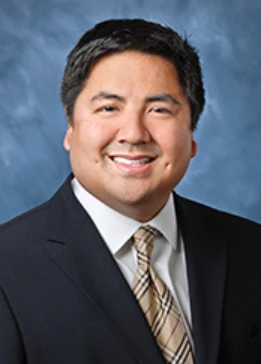LBA 09 - A randomized phase 2 study of enhanced AR blockade with enzalutamide in high-risk patients with biochemical relapse undergoing salvage radiation: final results from RTOG 3506 (STEEL)
Presenter(s)

M. P. Mehta1,2, S. Pugh3, A. Mahajan4, H. A. Shih5, C. Tsien6, T. Chenevert7, M. Gilbert8, A. Omuro9, K. Aldape10, B. K. K. Teo11, Y. Cao12, A. Srinivasan7, O. H. Khan13, J. Huang14, P. D. Brown15, R. Kotecha2, P. Vempati16, D. N. Yeboa17, M. Won18, and V. Gondi19; 1Herbert Wertheim College of Medicine, Florida International University, Miami, FL, 2Miami Cancer Institute, Baptist Health South Florida, Miami, FL, 3The American College of Radiology, Philadelphia, PA, 4Department of Radiation Oncology, Mayo Clinic, Rochester, MN, 5Department of Radiation Oncology, Massachusetts General Hospital and Harvard Medical School, Boston, MA, 6Department of Radiation Oncology, McGill University Health Centre, Montreal, QC, Canada, 7Department of Radiology, University of Michigan, Ann Arbor, MI, 8NCI Center for Cancer Research, Bethesda, MD, 9Stanford University, Palo Alto, CA, 10National Institutes of Health, Bethesda, MD, 11Department of Radiation Oncology, University of Pennsylvania, Philadelphia, PA, 12Departments of Radiology and Biomedical Engineering, University of Michigan, Ann Arbor, MI, 13Northwestern Medicine Cancer Center Warrenville and Proton Center, Warrenville, IL, 14WashU Medicine, Department of Radiation Oncology, St. Louis, MO, 15Mayo Clinic Cancer Center, Rochester, MN, 16Northwell Health, Lake Success, NY, 17MD Anderson Cancer Center, Houston, TX, 18NRG Oncology Statistics and Data Management Center, Philadelphia, PA, 19Northwestern University Feinberg School of Medicine, Chicago, IL
Purpose/Objective(s):
RT dose-intensification in GBM demonstrates survival (OS) improvement, up to 60 Gy; escalation >60 Gy in the pre-temozolomide (TMZ) era failed to lengthen OS. Non-randomized concomitant RT TMZ trials have established simultaneous integrated boost (SIB) intensification to 75 Gy as safe and potentially more effective. Further, lymphopenia in GBM is strongly associated with reduced OS; significant associations between lymphopenia and volume of brain irradiated are established; level 1 evidence demonstrates less lymphopenia with protons. In this signal-seeking Phase 2 randomized trial we tested the dual hypothesis of SIB intensification (DI) to 75 Gy with photon therapy (previously presented), and with proton therapy with the expectation of benefit from less lymphopenia. Here we present the proton cohort results.Materials/Methods:
Patients with newly diagnosed GBM, KPS=70, with =5cm residual tumor/cavity, after central pathology confirmation and central MGMT analysis were stratified by RPA class and MGMT status and randomized 1:2 at pre-declared photon centers to 60 Gy/30 fxs with photons or 75 Gy/30 fxs with proton therapy (DI), providing separate and independent SOC controls for photon and proton cohorts. Standard concomitant and adjuvant TMZ usage was included. For the 193-patient proton cohort, there was 80% power to detect a hazard ratio (HR) = 0.72 (median OS D 16.0 to 22.2 months), with a one-sided a at 0.15, 1 interim futility analysis.
Results:
Between October 2014 and May 2022, the proton cohort randomized 193 patients. Patients were balanced between arms for pretreatment characteristics (the proton DI arm had numerically more unmethylated GBMs, more patients with lower KPS, and fewer with gross-totally resected tumors versus the 60 Gy comparator). No statistically significant between arms differences in high grade toxicities (all) were observed; specifically, =G3 lymphopenia and =G4 neurologic toxicity rates for SOC vs. proton DI were 23.4 vs 17.1, and 1.8% vs 5%. The proton 75 Gy arm demonstrated improved OS (HR= 0.81, 70% CI 0.67-0.98, p =0.11) and remained significant when correcting for MGMT methylation status and RPA class. The absolute survival improvement in favor of 75 Gy proton arm at 2 and 3 years was 6.8% (43.1 vs 49.9%) and 4.6% (25.4 vs 30%), with median OS of 22.8 (20-28.6) vs 22 (15.8-27.8) months. As expected, OS was superior for both MGMT methylated as well as for lower RPA class patients, and without significant interaction between treatment arm and either MGMT status or RPA. Results didn’t meet criteria for comparing 75 Gy protons vs 75 Gy photons.Conclusion:
This signal-seeking P2R multicenter NRG Oncology trial did not demonstrate OS improvement with 75 Gy photon SIB (previously reported) but met the pre-specified statistical hypothesis for improved OS for the proton 75 Gy cohort, providing the necessary data to design and conduct a definitive P3 randomized trial.
